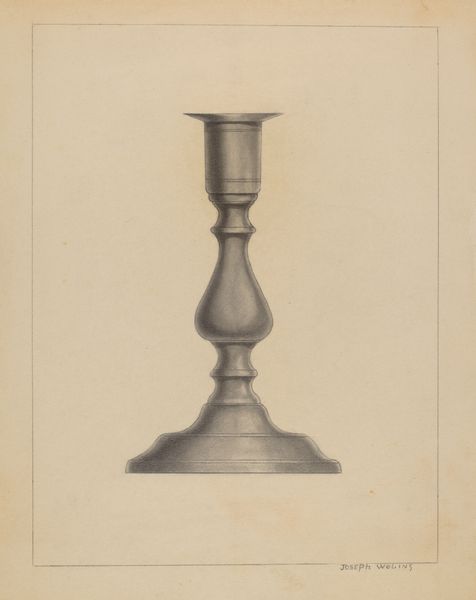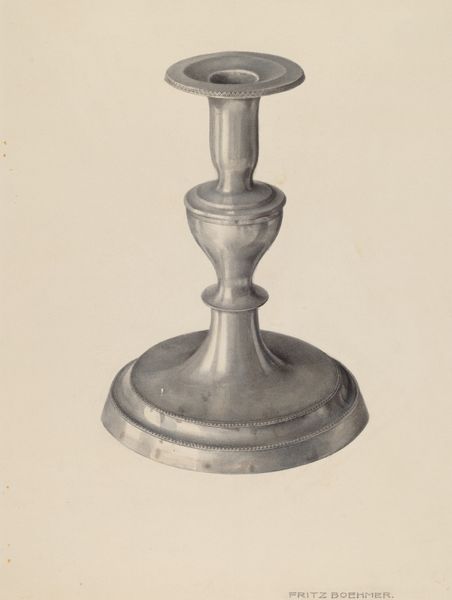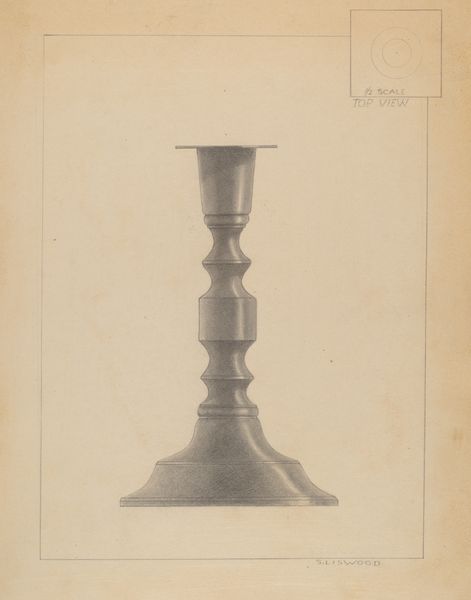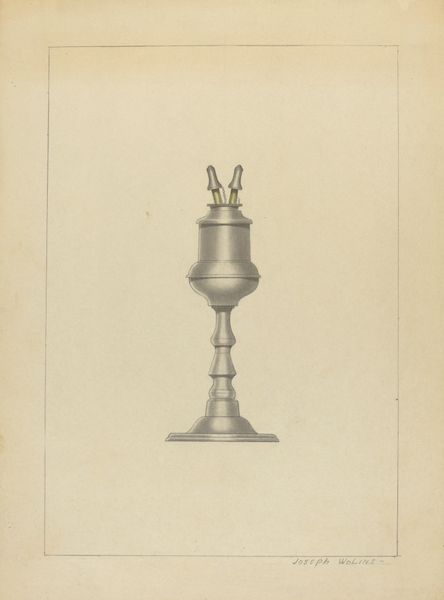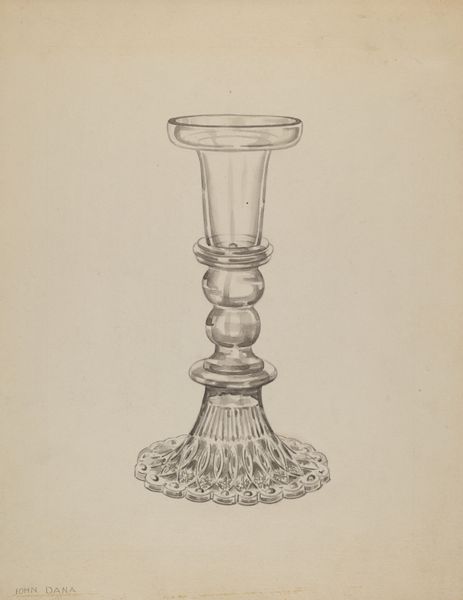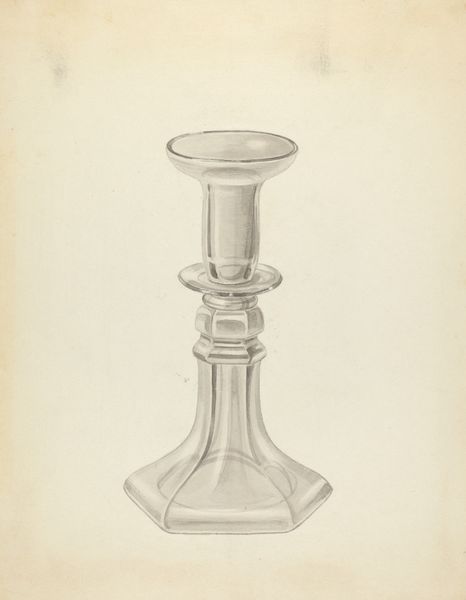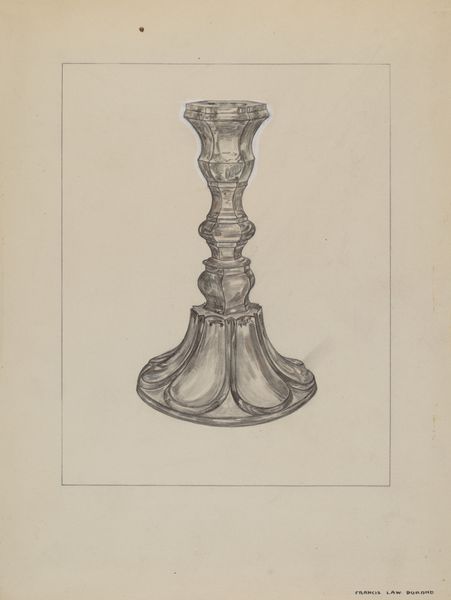
drawing, pencil, graphite
#
drawing
#
pencil
#
graphite
#
graphite
#
realism
Dimensions: overall: 35.5 x 24.6 cm (14 x 9 11/16 in.) Original IAD Object: 10 7/8" high; 5 1/4" in diameter
Copyright: National Gallery of Art: CC0 1.0
Curator: This graphite and pencil drawing, created around 1937 by Theodore Pfitzer, depicts a "Pewter Lard Oil Lamp." Its realist style invites us to consider its presence. What are your initial impressions? Editor: I am struck by the stark stillness and formality. It has a somber presence. The meticulous rendering, the choice of muted graphite, everything seems to point to a certain severity. I wonder about its functionality within its socio-political timeframe. Curator: Lard oil lamps were indeed common household items before widespread electrification. But I would venture this drawing goes beyond simple representation. During the late 1930s, the lingering effects of the Depression and the anxieties building towards another World War likely contributed to a prevailing atmosphere of austerity. The work can be read as representing an object that casts literal and figurative light. Editor: So the mundane, everyday object becomes imbued with a weight beyond the practical, mirroring the broader context of that time. Its existence reflects reliance and simple existence. This approach speaks to me. There’s an entire story implicit in the shadow play alone; the very act of rendering in graphite amplifies the contrast, underscoring how class structures perpetuate marginalization in those communities affected by events like the Great Depression. Curator: Absolutely. The drawing is skillfully executed; note the artist's attention to the reflective surface of the pewter. Consider also the broader cultural discourse. Drawings like these are seldom displayed as final "artistic" achievements; however, this object stands as a testament of how essential illumination is during difficult times, especially to those overlooked by mainstream culture. Editor: Which prompts a range of questions around representation and social justice: who uses this lamp, where is it used, and by extension, whose stories are left out of traditional accounts of the era? I start imagining spaces lit only with lamps like this. Who lives within? Whose work happens by the lamps’ glow? The unseen. Curator: And in visualizing it so precisely, Pfitzer inadvertently invites us to confront the very inequities these objects illuminated, making visible what may have been intended to remain in shadow. Editor: This has prompted a really compelling exploration—it is exciting to understand both what's explicitly shown and the implications resonating beyond the edges of the artwork itself. Curator: Indeed. It’s an unassuming yet quietly profound testament to those trying years.
Comments
No comments
Be the first to comment and join the conversation on the ultimate creative platform.


